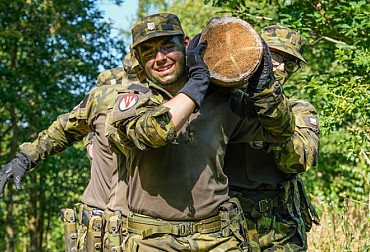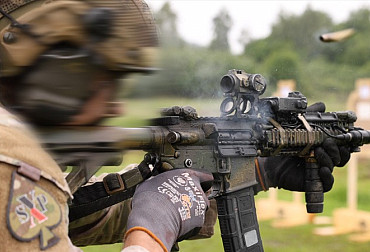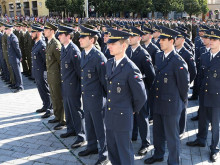Czech Gripens Celebrate 15 Years of Operation
Fifteen years ago, on April 18 of 2005, the first six JAS-39C Gripen single-seat fighters landed at the 21st Tactical Air Force Base Čáslav. The aircraft landed in pairs, the first always piloted by a Czech pilot, the second by a Swedish one. Lt. Col. Michael Borůvka was the first Czech pilot to land on the Čáslav runway, followed by Lt. Col. Petr Mikulenka and Captain Jiří Pospíšil. On August 17 and 18, 2005, another six JAS-39C Gripen aircrafts landed at the Čáslav base. At the end of August, the remaining two two-seater JAS-39D Gripen aircraft arrived.
From 1 July 2005, new modern machines replaced the outdated MiG-21MF aircraft in the alliance system of collective protection NATINADS (NATO Integrated Air Defence System, later NATINAMDS - NATO Integrated Air and Missile Defence System). The armament of the 211st Tactical Squadron at Čáslav currently incorporates 14 Gripens, including 12 single-seat combat JAS-39C and 2 two-seat training-combat JAS-39D.
 Picture: Historically, the first solo flights in a single-seat Gripen were performed on October 6, 2004 by Lt. Col. Michael Borůvka (right) and Lt. Col. Petr Mikulenka (left) | Warrant Officer Martin Král, ACR Archive, Saab | army.cz
Picture: Historically, the first solo flights in a single-seat Gripen were performed on October 6, 2004 by Lt. Col. Michael Borůvka (right) and Lt. Col. Petr Mikulenka (left) | Warrant Officer Martin Král, ACR Archive, Saab | army.cz
Intensive Gripen training began two months after the contract was signed
The history of modern fourth-generation fighters in the Czech Air Force's arsenal began in 2004. Specifically, on June 14, 2004, the Czech government signed a contract for the lease of 14 JAS-39 Gripen aircraft for a period of ten years. Ten years later, an amendment to the contract was signed to extend the original lease until 2027, with the possibility of an option for another two years.
In Sweden in August 2004, an intensive, fast and demanding training of the first two Czech pilots began, consisting mainly of different ways of controlling the modern aircraft. At the end of the year, the pilots were joined by another six pilots and about 20 people from the ground technical personnel.

Picture: Gripen aircraft have been guarding the airspace over the Czech Republic since 2005 | Warrant Officer Martin Král, ACR Archive, Saab | army.cz
Historically, the first solo flights in the single-seat Gripen were carried out on Wednesday, October 6, 2004, from the Swedish base Satenäs by Lt. Col. Michael Borůvka and Lt. Col. Petr Mikulenka. "At the time, it wasn't just about introducing a new type of aircraft. It was the introduction of the entire system – flying, weapons system, a completely new work philosophy for pilots and technical personnel," now Major General Petr Mikulenka, National Military Representative of the Czech Republic at NATO Headquarters in Europe in Mons, Belgium, comments on the transition to new technology then and continues: "Less than a year after signing the contract, the Gripens were in Čáslav. This was only possible thanks to everyone who collaborated on the project. It worked so fast because we all felt a huge responsibility. Beginning with the people from the implementation team to technicians. We could not afford anything but success at the time and did not even think about any other option.” During six months of pilot training, they flew 35 flight hours. After returning to the Czech Republic, they completed another approximately 20 flight hours in the fighters.

Picture: Czech Gripens celebrate 15 years of operation | Warrant Officer Martin Král, ACR archive, Saab | army.cz
In constant alert since July 2005
The first two pilots who started service with the new aircraft under so-called Quick Reaction Alert were Jiří Pospíšil and Jaroslav Tomaňa. "In a record time, we were fully trained and ready to take over the tasks of protecting the airspace of the Czech Republic with these aircraft," recalls the current commander of the 21st Tactical Wing in Čáslav, Colonel Jaroslav Tomaňa.
The Czech pilots carried out the first military action, the so-called Alfa Scramble, on August 24, 2005. The aircraft were sent to a Turkish Airlines Airbus A320 on the Istanbul-Hamburg route, which did not establish a radio connection with the air traffic control unit. On average, Czech fighters take off about ten times a year.

Picture: Czech Gripens celebrate 15 years of operation | Warrant Officer Martin Král, ACR archive, Saab | army.cz
The operation of Gripen requires only two technicians
"When I became a member of the 211th Tactical Squadron in 2005, a huge challenge was waiting for me. At that time, new JAS-39 Gripen C/D aircraft were being introduced into the ACR Air Force's arsenal. Among other things, this meant the need for us to switch to the Swedish technical maintenance system, and it was very different from ours,” Command Sergeant Major M. J. describes his beginnings. Selected technicians had to complete four months of training in Halmstad, Sweden.
Gripen was designed with the intention of simplified preparation before the flight and its operation requires only two technicians. During its service, the Gripen also underwent many modernizations. The technical staff too had to pass more trainings to improve their skills and abilities.

Picture: JAS-39 Gripen aircraft in the Air Force of the ACR | Warrant Officer Martin Král, ACR archive, Saab | army.cz
The old MiG was replaced by the three decades younger Gryf
"There is a clear 30-year difference between the two aircraft, in terms of aerodynamics, avionics and combat capabilities," Major Michal Daněk, one of the most experienced Čáslav pilots, describes the difference between the MiG-21 and JAS-39 Gripen (Swedish Gryf).
During the first years of operation, there was a Swedish support group operating at the Čáslav base, which in the first phase included technicians and two pilots. The Swedish staff helped with the commissioning of aircraft, technical support and training.
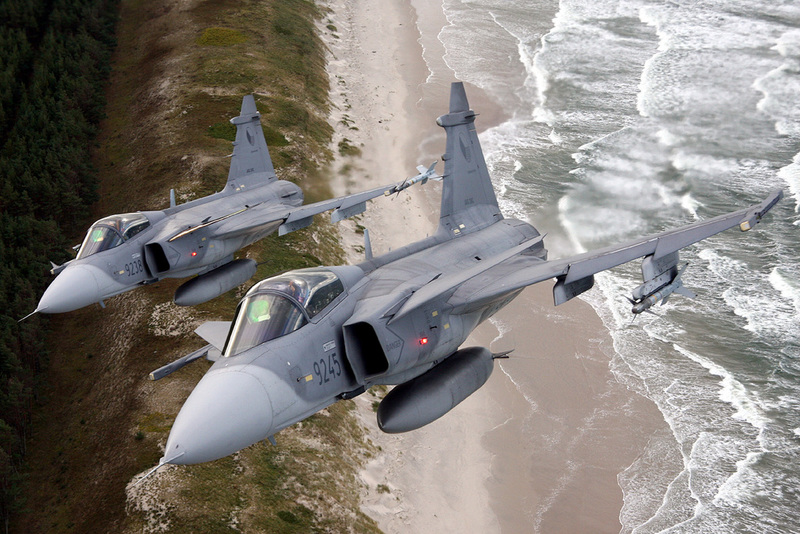
Picture: The JAS-39 Gripen multi-purpose fight aircraft on service of the Czech Armed Forces | Wikimedia Commons
Gripens guard more than the Czech airspace
"With the JAS-39 Gripen aircraft, we protect the airspace not only over the Czech Republic. We are also fulfilling our allied commitments. We participated with them in six missions abroad, where we guarded the airspace of countries that do not have their own supersonic air force," says Colonel Petr Tománek, commander of the 21st Tactical Air Force Base Čáslav.
Czech pilots have flown with Gripen aircraft for more than 28,500 flight hours during their deployment in the service of the ACR Air Force. The Čáslav Gripens have guarded the airspace of Latvia, Lithuania and Estonia three times, in 2009, 2012 and 2019. They operated from the Šiauliai air base in Lithuania and Ämari in Estonia. The Czech fighters later guarded the airspace of Island in 2014, 2015 and 2016.
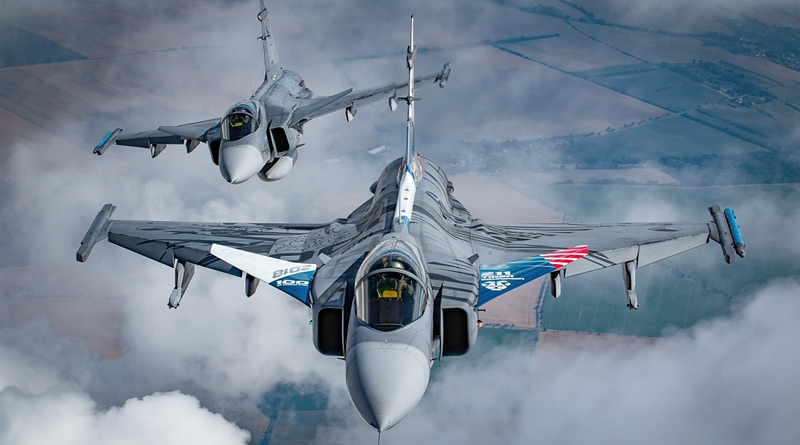
Picture: The JAS-39 Gripen multi-purpose fight aircraft on service of the Czech Armed Forces | army.cz















